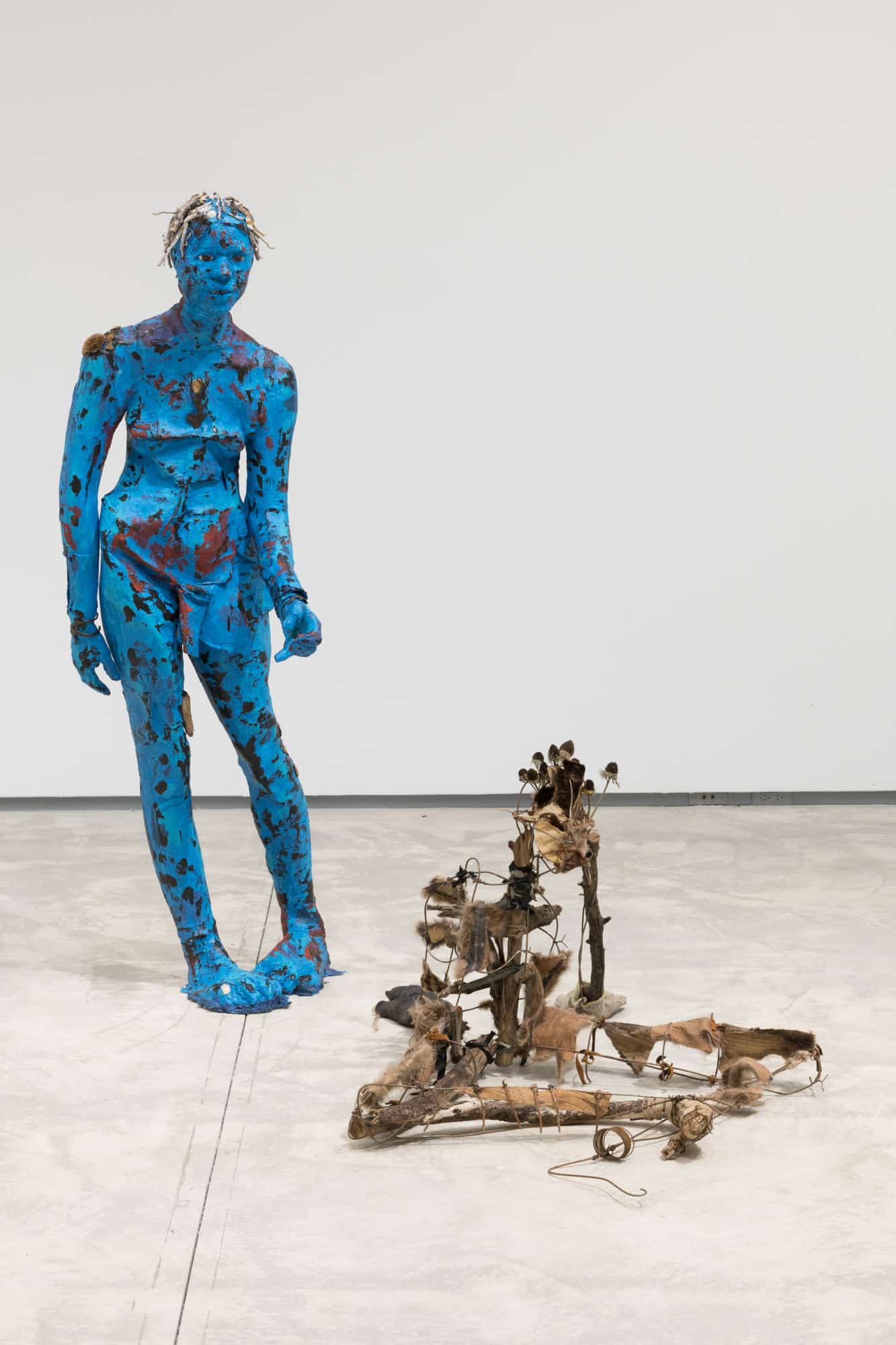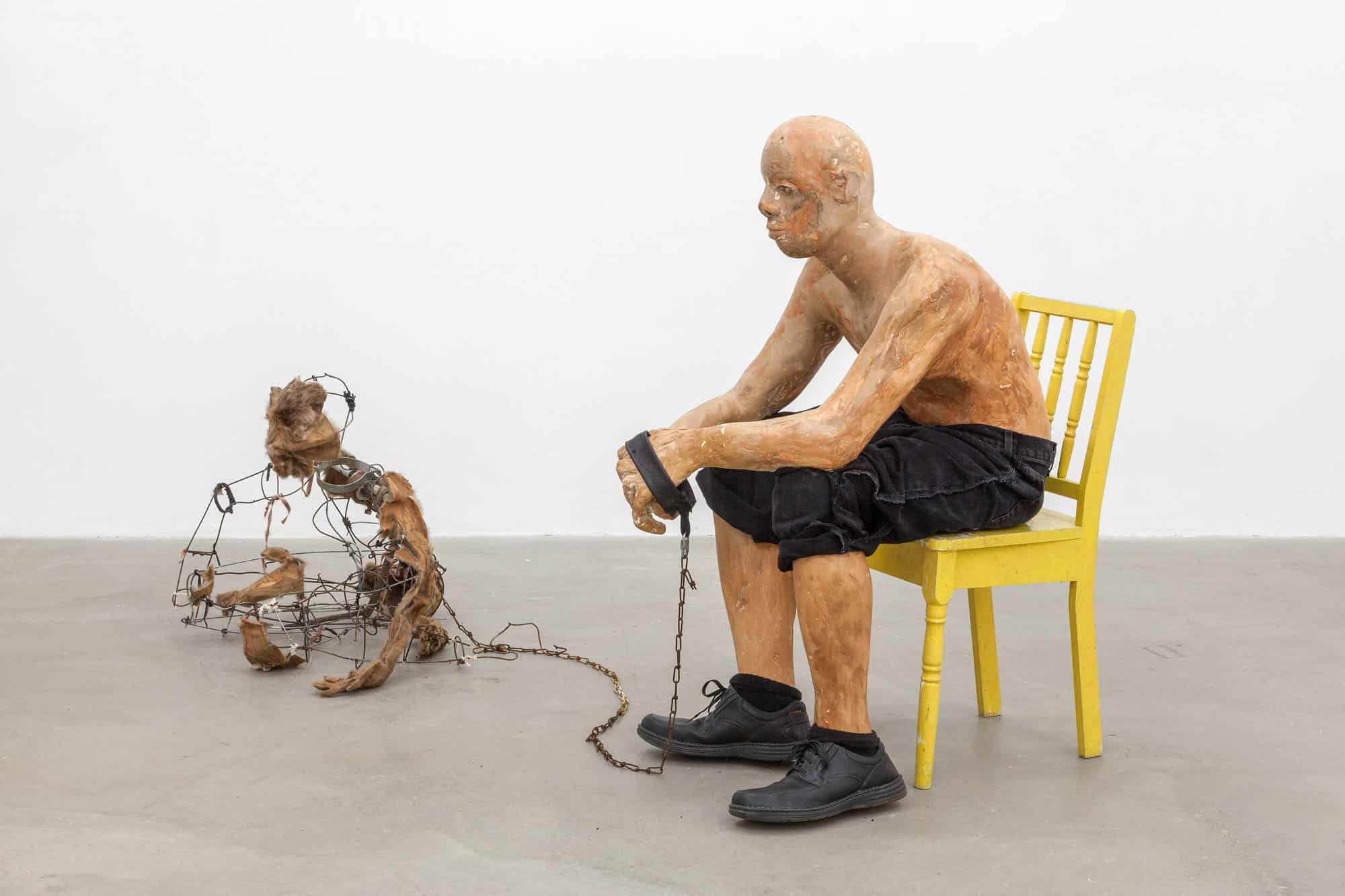Agnes presents the first institutional solo exhibition in Canada by celebrated Toronto-based artist Tau Lewis. A visionary speculation imbues her recent sculptural installations of transfigured found materials with raw and moving imaginaries. These gatherings of figures and narrative fabric patchworks include poignant “bulletproof” characters born of alternate geographies that re-articulate black bodies and nature. Lewis’s works disclose magnitudes of unbelonging; they are at once aberrant bodies and fantastical vessels for ancestral communication. They raise questions about the construction of race and privilege as, charged with time capsules of secret sacrificial objects, they make their way to a space of joy and magic.
A 13-week artist’s residency project is a rich platform for Tau Lewis’s artmaking process that connects her ideas and work with Kingston’s public and academic audiences. The residency is supported by the Stonecroft Foundation for the Arts, the Queen’s University Department of Gender Studies through the Queen’s Visiting Artist in-Residence Arts Fund, and the BFA (Visual Art) Program.

Tau Lewis, I the spirit conductor come to tell you we were here before this, 2018. Collection of the artist.

Tau Lewis, you lose shreds of your truth every time I remember you, 2017. Collection of Nixon Chustz
Tau Lewis (b. 1993) is a Jamaican-Canadian artist living and working in Toronto, Canada. Recent and forthcoming solo exhibitions include: Frieze New York, Atlanta Contemporary, Jeffrey Stark, NY. Recent and forthcoming group exhibitions include: MoMa PS1, New York, Chapter Gallery, New York, COOPER COLE, Toronto, Night Gallery, Los Angeles, New Museum, New York.
Tau Lewis’ self-taught practice is rooted in healing personal, collective and historical traumas through labour. She employs methods of construction such as hand sewing, carving and assemblage to build portraits. She considers the history and symbolism of each material, exploring the political boundaries of nature, identity and authenticity. Her work is bodily and organic, with an explicit strangeness. The materiality of Lewis’ work is often informed by her surrounding environment; she constructs out of found objects and repurposed materials, as well as live plants and organisms sourced from urban and rural landscapes. She connects these acts of repurposing and collecting with diasporic experience. Her portraits are recuperative gestures that investigate black identity and agency, memory and recovery.
Lewis’s recent works consider the undocumented, sometimes inaccessible historical information centres of black life such as the oceans, forests, and deep underground spaces; her figures are often coloured and textured to mimic the oceans, earth, and cosmos. Lewis uses animal and insect imagery as playful and ironic references to the demarcation of black bodies as separate from other genres of being human. Infused with personal belongings, found objects and material markers of time, each portrait is an energetically charged microcosm of memory, the unreal, unbelonging and bulletproof characters of an imaginary landscape realized through sculpture.